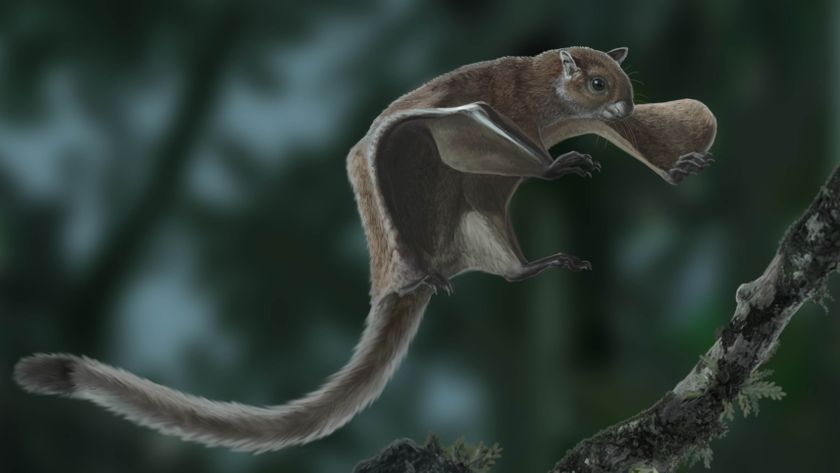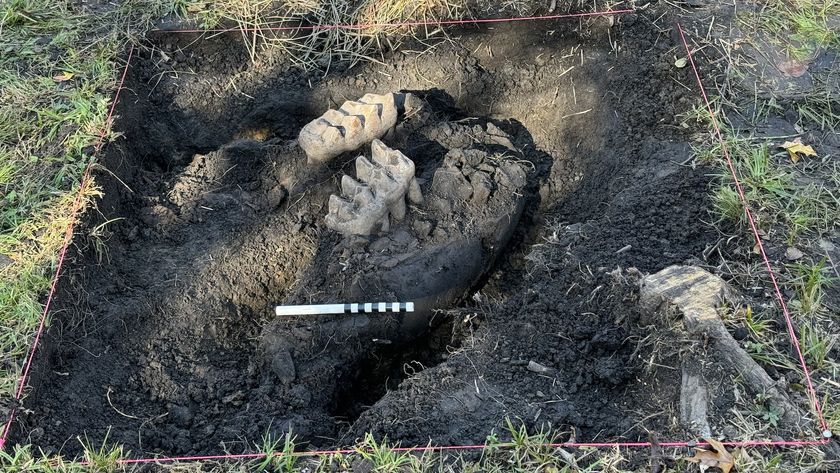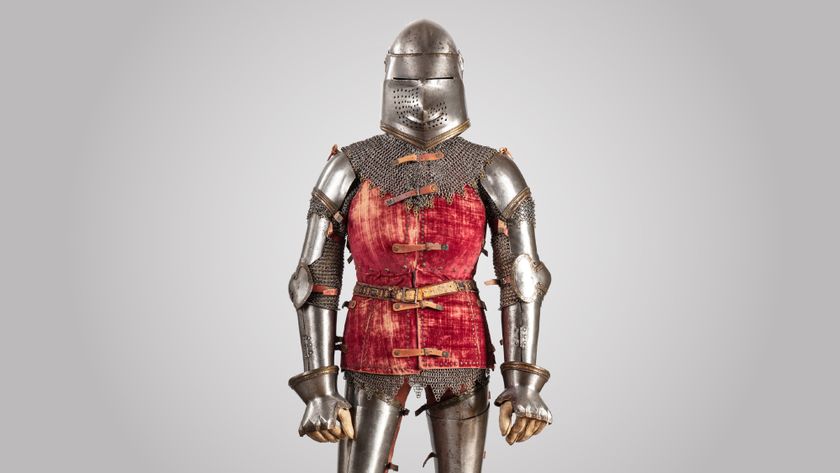Image Gallery: Ancient Beast Fossils Leap into 3D World
Enormous fossils of crocodiles, a prehistoric elephant and a giant tortoise that were found in the 1970s and 1980s are being studied anew. The fossils were too large to safely move at the time of their discovery, so the researchers — including members of the Leakey family, famed for their paleontology research, along with colleagues — left them in northern Kenya's Lake Turkana Basin. Now, decades later, paleontologist Louise Leaky and her colleagues have returned to the site and captured digital 3D images of the fossils, so researchers everywhere can study the animals' remains. [Full story: Giant Fossils Get Renewed Life with 3D Scans]
Here is a look at their work:
Crocodile scan
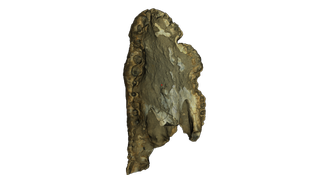
This 3D scan of part of the crocodile fossil shows the ancient animal's mandible in detail. The researchers used two 3D scanners made by a company called Artec, which donated the devices for the trip. (Photo credit: Artec Group)
Busted crocodile
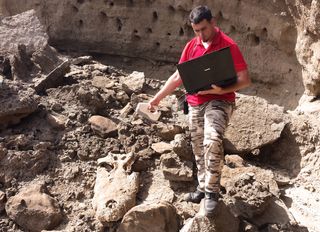
A 1.8 million year-old crocodile skull gets 3D scanned by Denis Baev, the head of the product requirements department at Artec. Such scanning records the details and dimensions of fossils. It's likely that people had vandalized and broken the crocodile fossil since the Leakey team uncovered it decades ago, he said. (Photo credit: Artec Group)
Sister excavation
Sign up for the Live Science daily newsletter now
Get the world’s most fascinating discoveries delivered straight to your inbox.
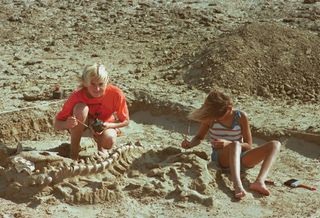
Louise Leakey (left) and her sister Samira excavate a 1.8-million-year-old crocodile in 1984. The fossil was too large to move, so the family and its team built a small enclosure around the specimen to help preserve it. (Photo courtesy of Louise Leakey)
Flash forward
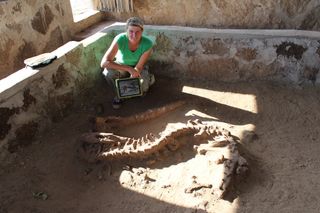
Louise Leakey, now a paleontologist who works in Kenya, crouches near the crocodile skeleton her family excavated in the 1980s. The skeleton is nearly complete and a valuable find for researchers. (Photo courtesy of Louise Leakey)
Scanning time
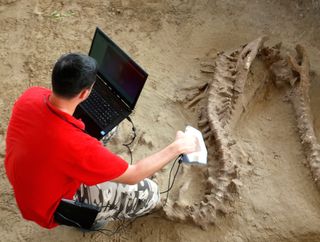
Baev takes a 3D scan of the crocodile, whose long snout likely helped it catch fish during its lifetime 1.8 million years ago. (Photo credit: Artec Group)
Digital crocodile

A 3D digital representation of the crocodile fossil. Now, instead of traveling to remote Kenya to see the fossils, researchers can access and study the 3D scans online. (Photo credit: Artec Group)
Giant turtle
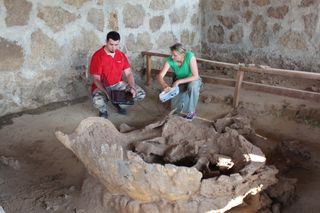
Leakey and Baev scan the fossilized shell of a giant tortoise. It took them about two hours to scan the shell because they had to scan both the inside and outside to record all of its details, Baev said. (Photo credit: Artec Group)
Elephant tusks
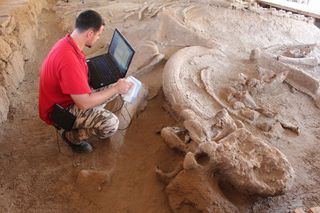
Discovered in 1974, this prehistoric elephant (Elephas recki) is larger than its modern ancestor, the Asian elephant. The fossil includes the elephant's skull, tusks, mandible, limb bones, ribs, vertebrae and foot bones. (Photo credit: Artec Group)
Safe haven
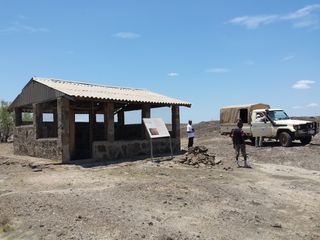
The Leakey family and their colleagues built enclosures around some of the fossils that were too large to safely move to a museum. Now that researchers have scanned the fossils in 3D with special tools, the Leakey family may move the fragile remains to a museum or research institute for safekeeping. (Photo credit: Artec Group)
Creepy insects
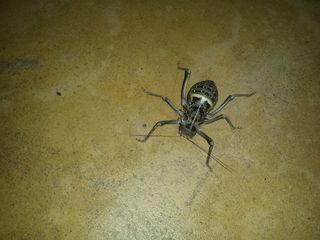
During the researchers' trip, giant insects emerged at night. Baev called them the worst part of the trip to Kenya. The insects would flock to any light source, be it a computer monitor, scanner, cellphone or flashlight. He said he always cheered for the bats, which would eat the insects. (Photo credit: Artec Group)
Hominid head
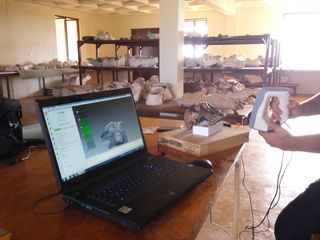
Once back at the Turkana Research Institute, the researchers also created digital images of casts of hominid skulls kept there, with the 3D scanners. (Photo credit: Artec Group)
Follow Laura Geggel on Twitter @LauraGeggel and Google+. Follow Live Science @livescience, Facebook & Google+.

Laura is the archaeology and Life's Little Mysteries editor at Live Science. She also reports on general science, including paleontology. Her work has appeared in The New York Times, Scholastic, Popular Science and Spectrum, a site on autism research. She has won multiple awards from the Society of Professional Journalists and the Washington Newspaper Publishers Association for her reporting at a weekly newspaper near Seattle. Laura holds a bachelor's degree in English literature and psychology from Washington University in St. Louis and a master's degree in science writing from NYU.
